Table of Contents
- White-hat link building emphasizes ethical, Google–compliant tactics, such as content promotion and digital PR.
- Top-performing strategies include data studies, infographics, interactive tools, and outreach to resource pages.
- Diversify tactics—don’t let one method dominate over 30–40% of your link profile.
- Reactive PR, quote platforms, and unlinked mentions provide powerful, non-content-based link opportunities.
- Prioritize relevance, authority, and value in every link acquisition effort to build a sustainable backlink profile.
Building links is supposed to take work.
Usually, the more effort it takes, the more valuable the link. Google doesn’t like it when link builders try to game the system, and they regularly take steps to discourage this. So, if it looks too easy, it probably isn’t too valuable.
Building relevant, quality links naturally is always the best way to go. But far too many people reach over to the dark side of black hat and gray hat link building in hopes of scaling quickly.
Resist!
Link building strategies that use white hat tactics is the best way to ensure your site has a natural, quality backlink profile.
Below is a list of white hat link building tactics that won’t get you in trouble.
What is White Hat Link Building?
White hat link building is building links ethically and adhering to Google’s Link Spam policies.
Link building tactics that are against Google’s policies include:
- Buying or selling links for ranking purposes
- Excessive link exchanges
- Using automated programs or services to create links to your site
Gray Hat vs. Black Hat vs. White Hat Links
Since white hat links are acquired through completely ethical, Google-approved methods, black hat links are gained through manipulative practices.
Black hat link acquisition methods are some of the ones mentioned in the previous section, like buying links through link farms or using hidden links, all to boost a site’s ranking.
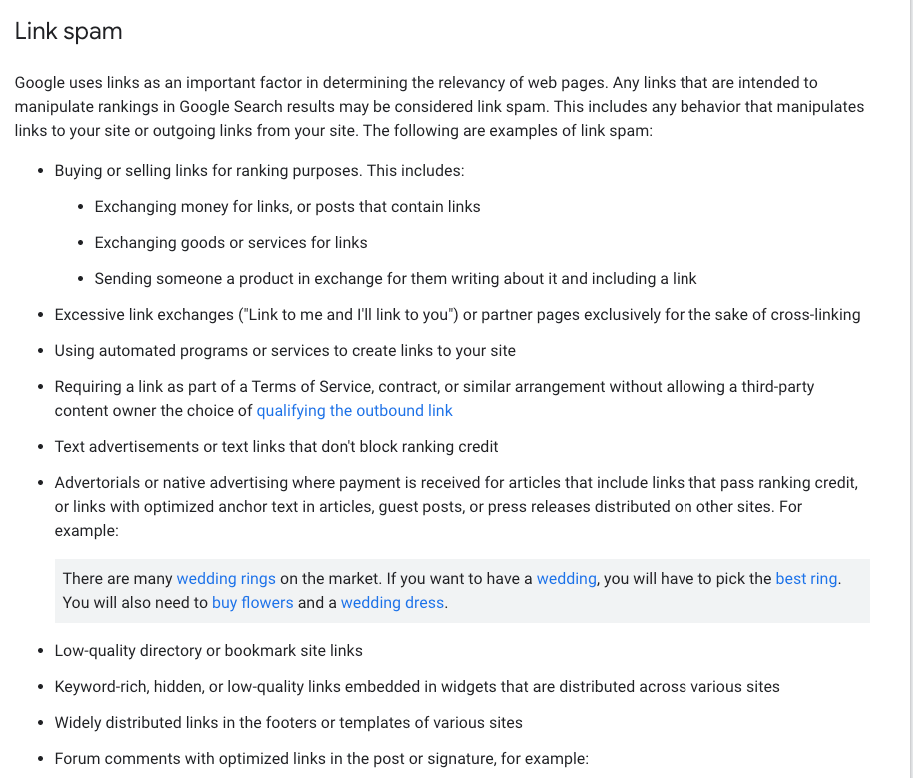
Gray hat links fall in between somewhere. Gray hat tactics aren’t explicitly banned by Google but are looked down upon. In short:
- White hat: completely safe
- Gray hat: moderately safe to risky
- Black hat: definite penalties
If you want to play it safe, stick with these white hat link building methods we list below. But. don’t rely too heavily on any tactic; spread it out.
Content-Led White Hat Link Building Tactics
Below are white hat link building tactics that require new or existing content.
1. Pitch Data Studies
Data studies have always proven to be great sources of high-quality backlinks, provided the data is interesting and packaged correctly.
Proprietary data is best because it is something no one else can access or recreate—especially AI.
You can get data from survey platforms like OnePoll, YouGov, Survey Monkey, and Pollfish if you don’t have user data.
You can also pull from third-party data sources, like government sites.
Once you find your data sources, develop a compelling story complete with findings and some graphics, and then pitch these to journalists via email and/or press release.
(Depending on how you visualize your data studies and survey results, you may choose to use an infographic, which is the next tactic on this list.)
Survey and data studies are typically part of the digital PR strategy, which Google said they liked as a white hat link building tactic in a now-famous (at least in the digital PR community) Tweet from John Mueller of Google.
I love some of the things I see from digital pr, it’s a shame it often gets bucketed with the spammy kind of link building. It’s just as critical as tech SEO, probably more so in many cases.
— John (@JohnMu) January 23, 2021
How to Pitch
To pitch surveys and data studies, identify journalists who have covered similar studies, and craft an email or press release highlighting the main takeaways. Link to media assets like graphs or charts and provide the data.
Learn how to write a media pitch or follow a template like this:
Hi [First Name],
I read your recent [Research Page Title] on [Website Name], and since you regularly cover [Topic], I thought you might be interested in the [Topic/Title] report that was just released by [Your Site/Company].
The report surveyed [provide survey demographics] and found some interesting takeaways in [topic], such as:
- Takeaway 1
- Takeaway 2
- Takeaway 3
The full report can be found here [link to report/press release].
[Name], [Title] at [Company], [short bio to validate their expertise on the subject]. [He/she] is available to elaborate further on the findings in this report. If you would like to speak with [Him/Her], I would happily set up a call.
If time does not permit a call, I am also happy to answer specific questions you may have on the subject or provide a quote for you.
I look forward to hearing from you soon.
–
Successful Examples:
Credit Karma
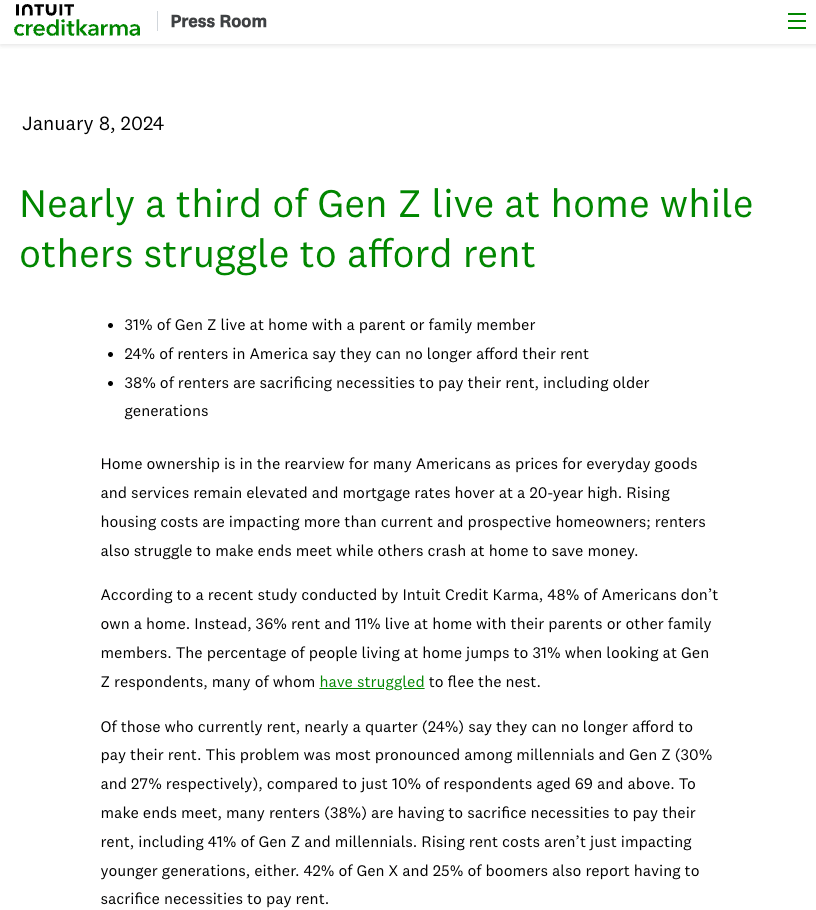
This study from Credit Karma found nearly a third of Gen Z live at home while others struggle to afford rent, and it has garnered over 140 linking root domains (LRD).
Preply
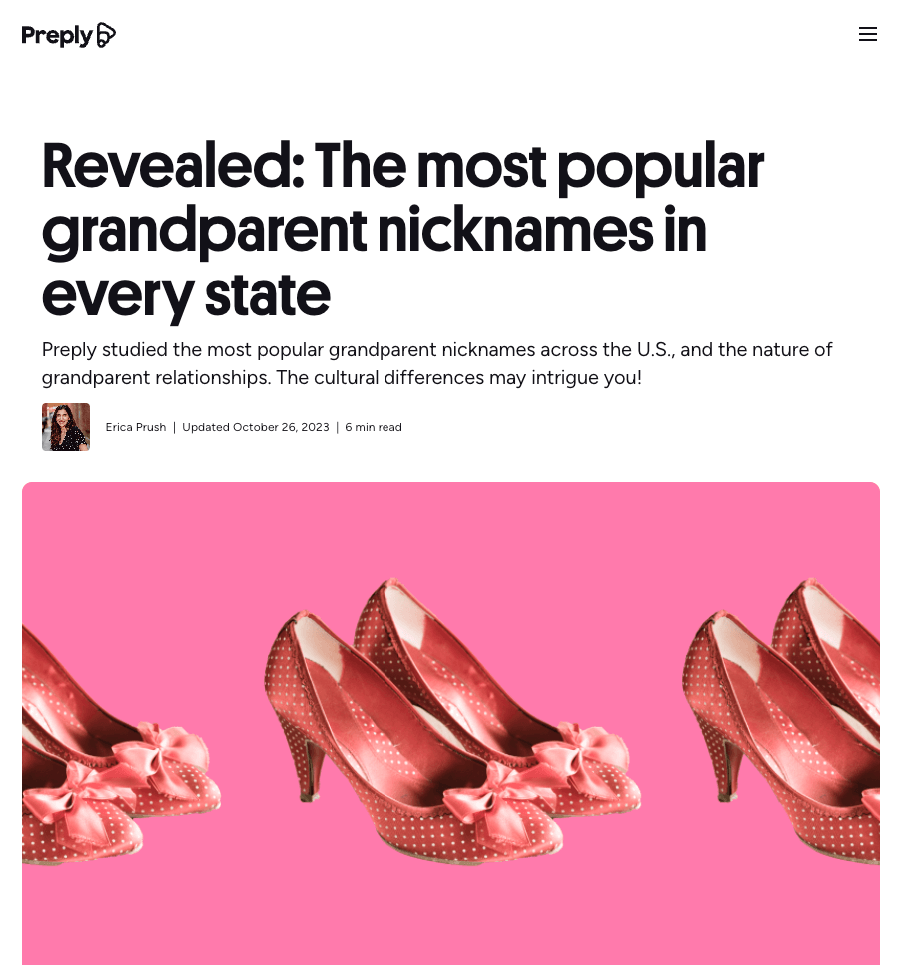
This survey from Preply found the most popular grandparent nicknames in each US state, which currently has over 150 LRDs.
Tip: Learn what makes a successful, data-driven survey study.
2. Create Infographics
Infographics have worked so well in the past because they provide a “physical” asset for bloggers to share within their blog posts. (Journalists rarely share infographics, so this is more of a blogger outreach tactic.)
These infographics essentially make non-pitchable topics pitchable. For instance, this social media statistics post from Oberlo can sometimes be tough to build links to actively. But, with an infographic attached, they have a pitchable asset.
Over the years, creating infographics using tools like Canva or Visme has lowered the barrier to entry for bloggers to create their own infographics, so investing in true graphic design work for your infographic will make it incredibly linkable.
Take Visual Capitalist for an example. Their entire site and strategy revolves around visualizations of different data sources.
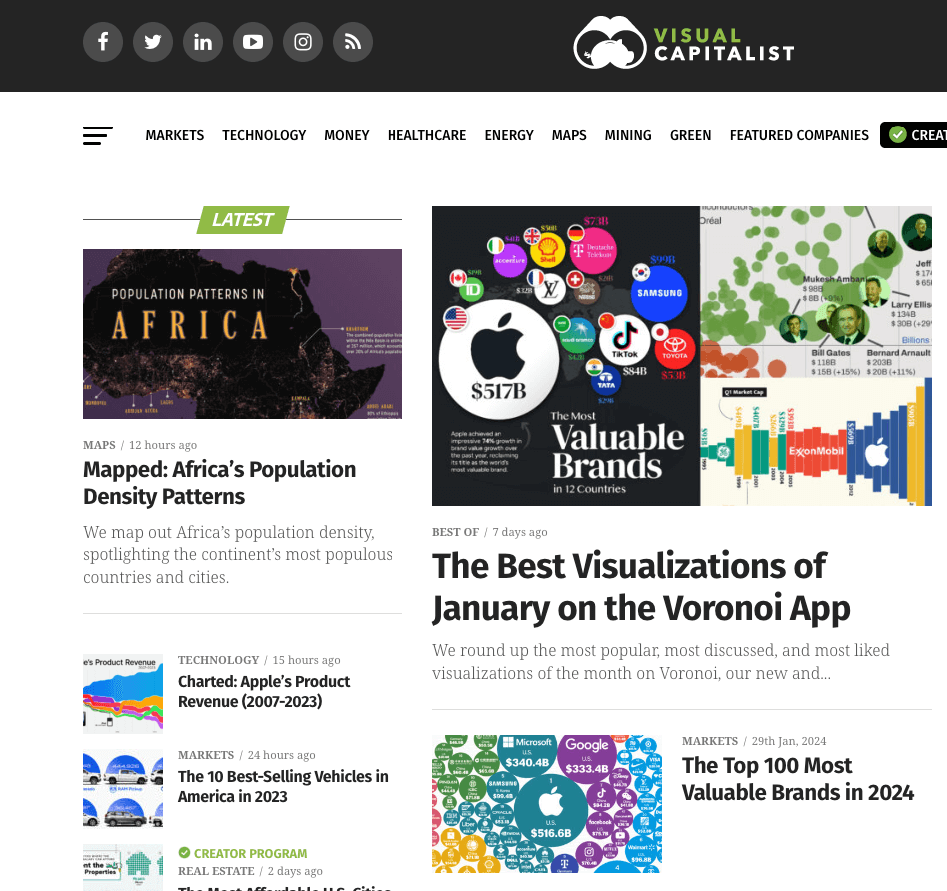
However, there is much more to infographics as a link building tactic than just visualizing data.
Think of infographics as supportive post images that recap the information on the page in a compelling way.
I’ve used infographics to pitch a list of science-backed tips, explain complex topics like how batteries work, and even visually list a collection of cars from a popular TV show.
How to Pitch:
Pitching infographics is all about the connection to the site. The strongest connection you can make is when the site has shared a similar infographic. Then you can start your email with, “I saw you shared X infographic, so I thought you might enjoy this one we created as well.”
Framing your email this way makes an immediate connection for your target (something I cover in the C.H.A.M.P. outreach method) and can help convince them to link to you.
Here’s a template:
Hi [First Name],
I saw you shared [Research Page Title] (personalize).
Since you shared, you and your readers might also be interested in a post we created on [topic].
The post covers [topic] and with [specific example] and has an infographic for sharing.
You can see the full post here: [link].
We’d be thrilled if you shared it with your readers if you’re interested. I’m happy to help write a custom post, embed code, or any high-res graphics if you need them.
Please let me know.
Successful Examples:
Resume.io

This career advice from successful founders from Resume.io has over 50 LRD.
Joe Chernov
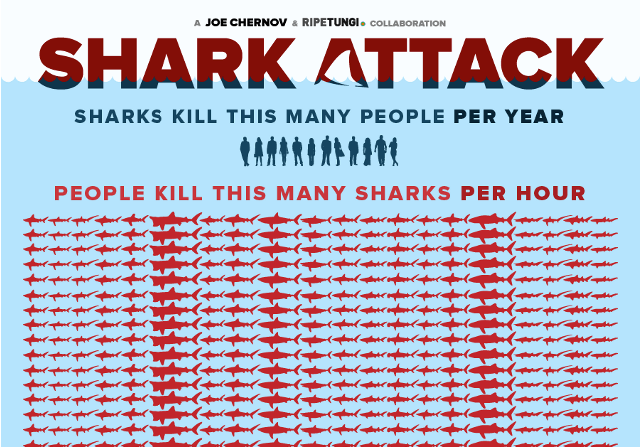
This is an old one, but this shark finning infographic was a must-include example because it’s one of my favorite examples of an infographic used to visualize a large number.
3. Generate Interactive Content
Calculators, quizzes, and other interactive content are great for building links and increasing organic traffic. Depending on your industry, you may be able to get press mentions as well.
I recommend a keyword-focused approach by finding a keyword that warrants an interactive approach. The keyword approach will give you the most value, given that interactive content typically requires a larger budget.
For instance, this large interactive microsite visualizes carbon emissions with a 3D game. This is a unique take and may get coverage initially. But, suppose the goal is long-term link growth.
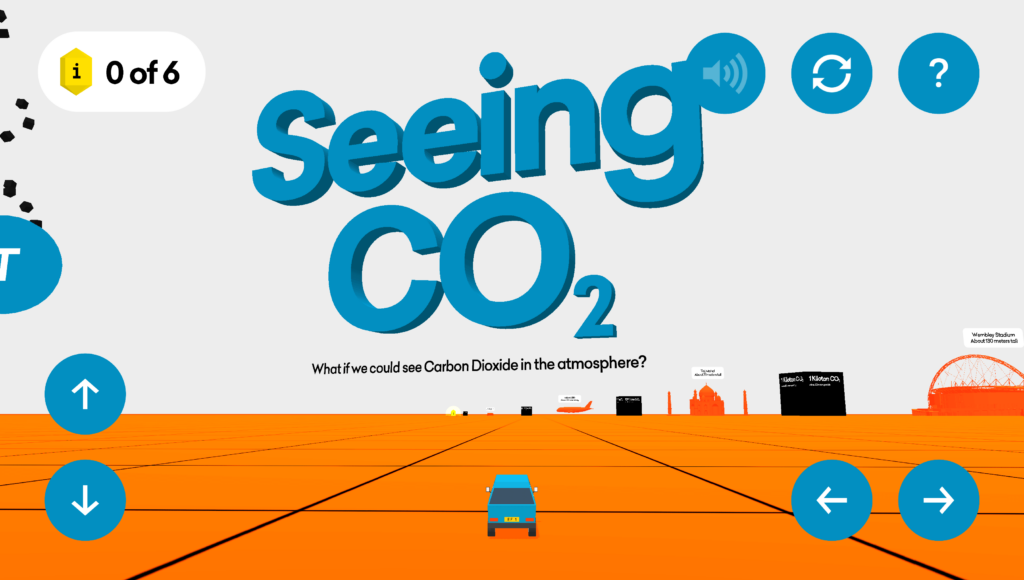
In that case, it’s wiser to lean into something like a carbon emissions calculator (where the keyword has a total potential monthly search volume of 3,800 and the top three ranking posts average 4,000 linking root domains.)

You can search your industry + calculator for starters. Other key terms might be “generator” or even “quiz”.
Depending on the size and complexity of your interactive elements, this approach may require some development work.
How to Pitch
Pitching an interactive is very similar to pitching an infographic.
Hi [First Name],
I saw you shared [Research Page Title] (personalize).
Since you shared, you and your readers might also be interested in an interactive we created on [topic].
The [calculator/tool] [explain what it does and why it’s valuable].
You can see the full post here: [link].
We’d be thrilled if you shared it with your readers if you’re interested. I’m happy to help write a custom post, embed code, or any high-res graphics if you need them.
Please let me know.
Successful Examples:
RentCafe
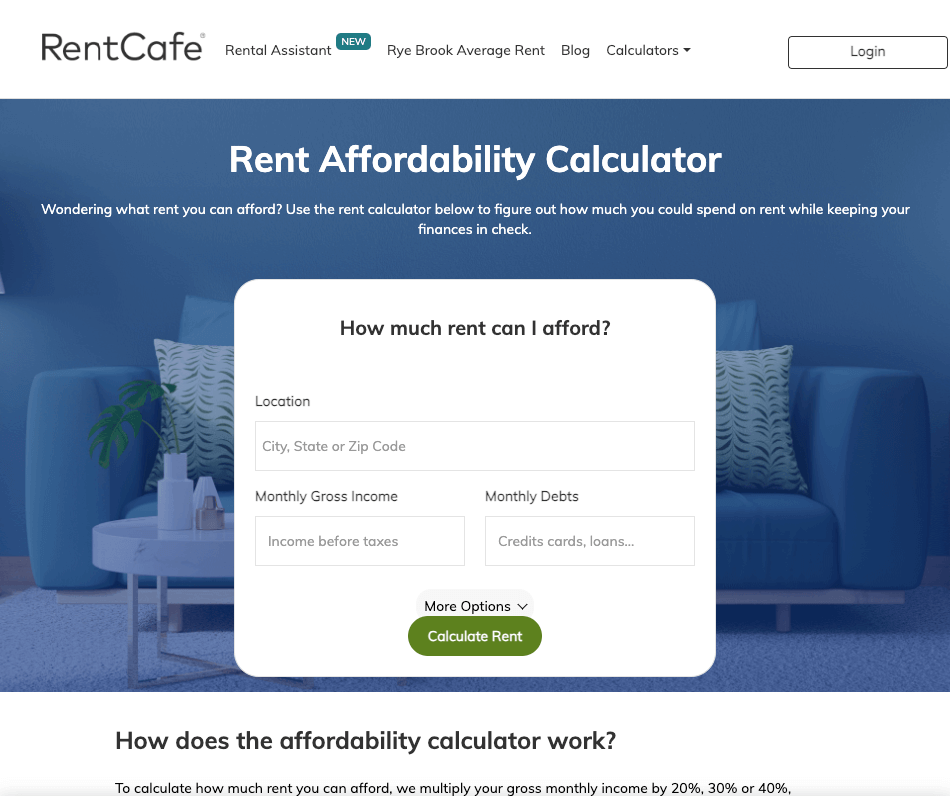
This RentCafe calculator shows how much rent you can afford. It brings in an estimated 28,600 organic monthly visits and has gained over 250 LRDs.
BetterPet
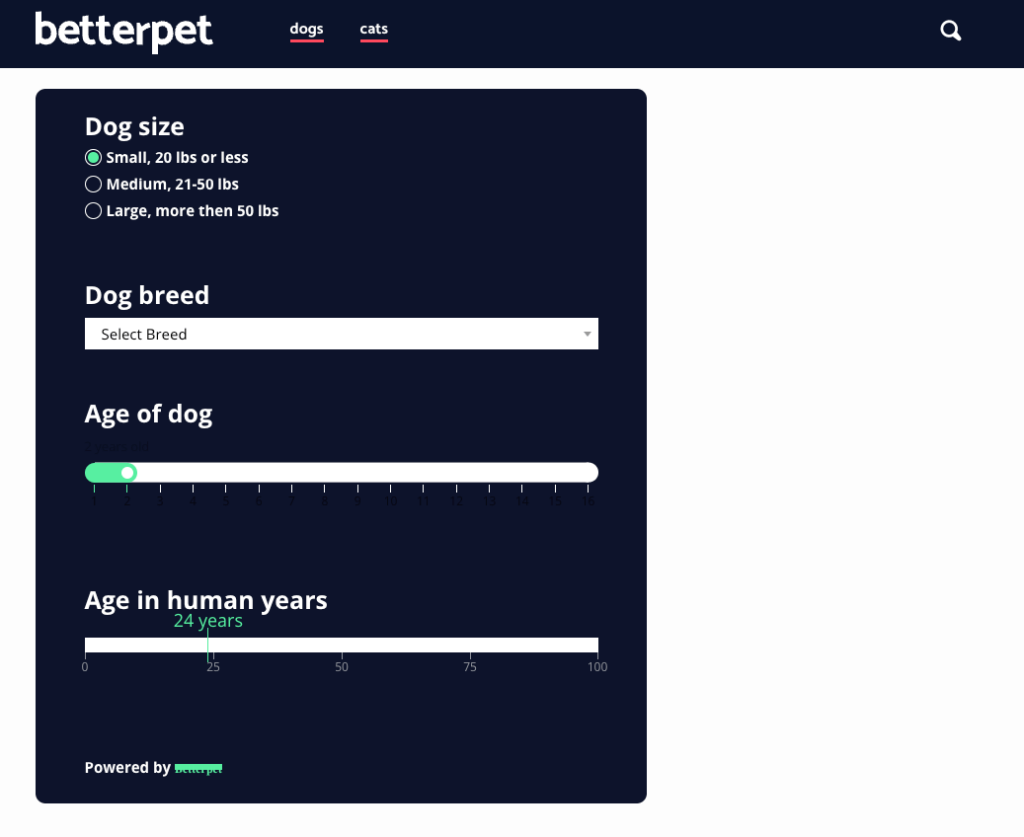
This BetterPet Dog Age Calculator has over 75 LRDs.
Don’t create an interactive post for these keywords unless you know yours is more helpful than Google’s.
4. Build Links to a Resource Page
Resource page link building is finding pages that list similar resources and pitching a resource to get a link back to your site.
This, of course, requires you first to create a resource that is worthy of pitching. The resource is typically a piece of informative content, like our HARO guide post. (Although you could also pitch an interactive or infographic to get added to a resource page.)
If you haven’t built a piece of content that you’re confident is better than what is out there, you can get ideas by looking at what your competitors are doing and creating something better (this is the basis of the skyscraper technique popularized by Backlinko).
Once you have your post, you can find resource pages by searching terms like “your industry” + intitle: or inurl:resources or inurl:recommended links.
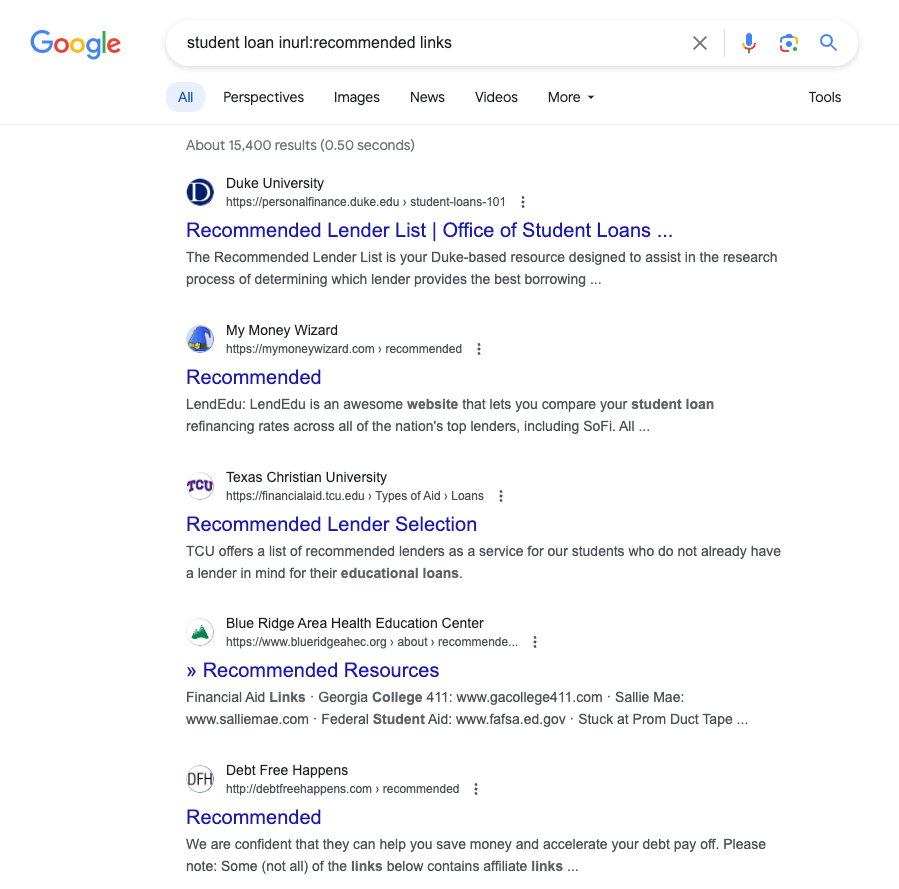
For example, the below highlights resource pages in the student loan industry.
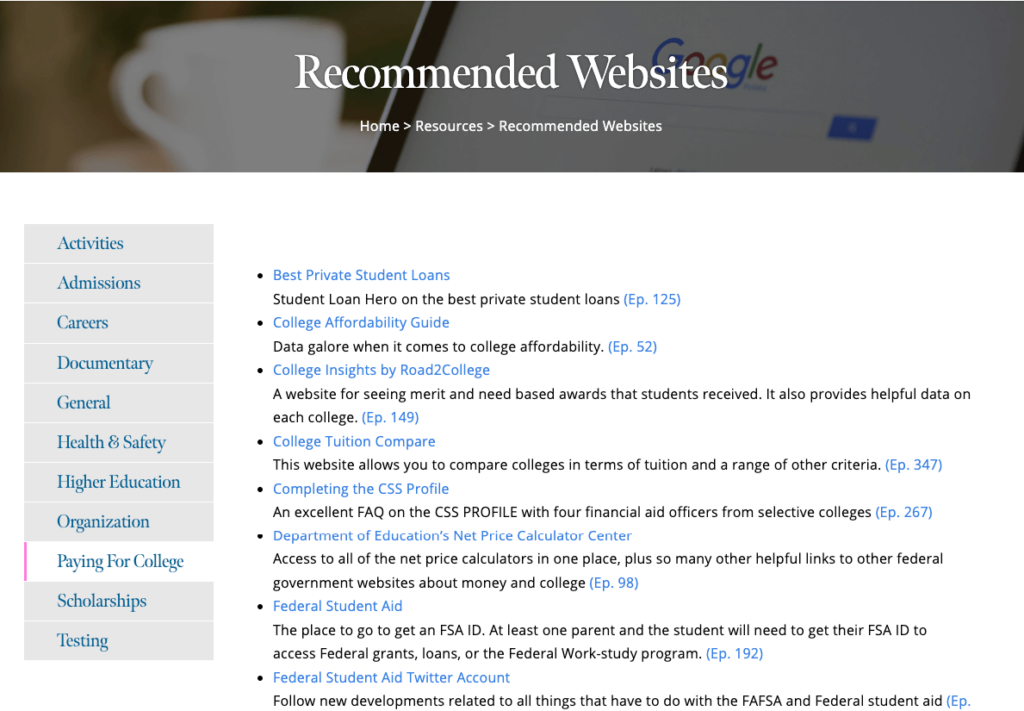
Then you are looking for pages or posts that have a list of links (aka resources). These pages are typically found on library sites, educational websites, and local government websites.
The main thing to look out for when performing resource page link building is the site quality you are targeting. The resource page’s site may even have a high DA or DR, but if the page is buried within the site, it will provide little link value.
Look at the Page Authority or URL Rating and your target resource page’s estimated organic traffic to better determine the quality.
The other thing to look out for is the number of outgoing links on a page. The more outgoing links a page has, the less value it brings to your site. Google has been quoted saying to avoid using more than ~100 outbound links on it (though this hasn’t been confirmed on any documentation recently.)
How to Pitch
To pitch your content for a resource page, the most important thing is to convince your target that your resource is a good fit for the site. You should move on if you aren’t confident it’s a fit.
Hi [First Name],
I came across your resource page on [Research Page Title] – [personalize]. I’ve created a guide on [topic] that might be a great addition to your page: [link].
It’s packed with helpful info on [brief description].
Would you consider adding it to your page? It would go great in [suggest location].
Please let me know!
—
Successful Examples:
LendEdu
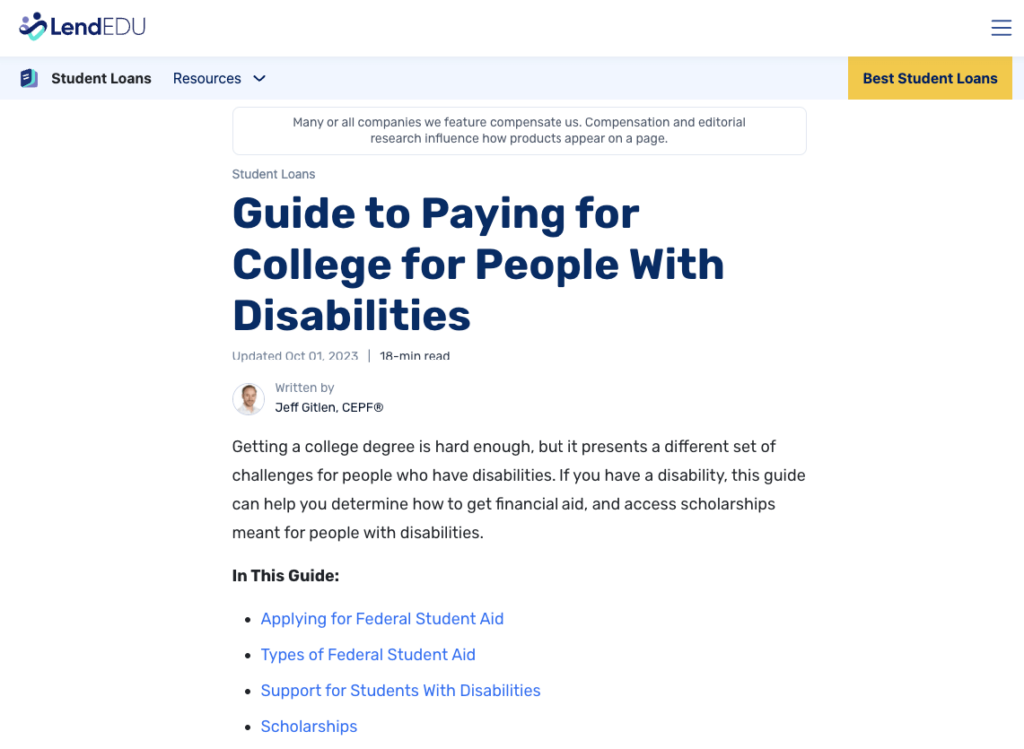
This guide from Lendedu has over 75 LRDs, many from resource pages like these.
California Mobility
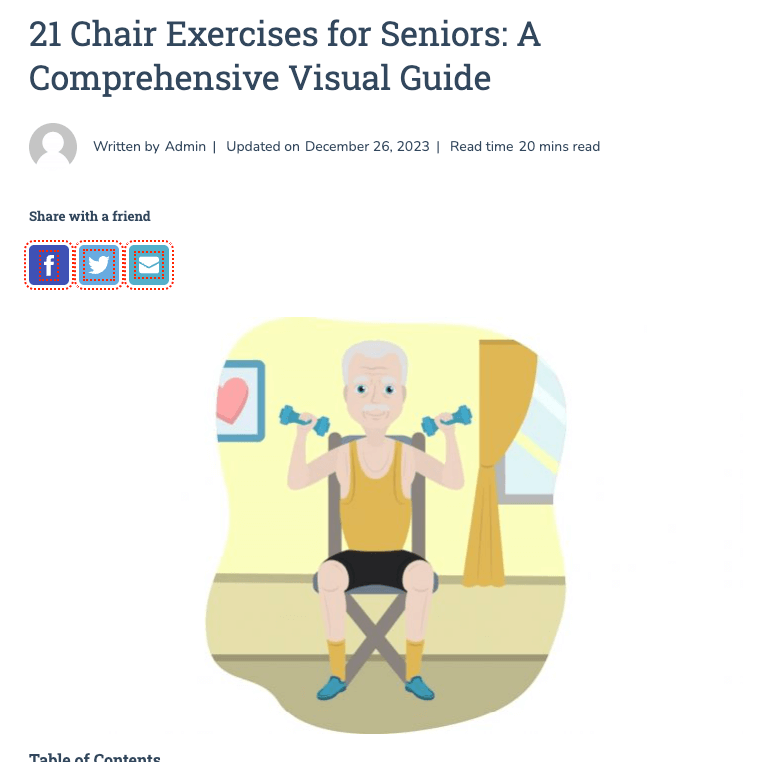
This guide of senior citizen exercises from California Mobility has gained over 270 LRD from resource pages like this.
5. Replace Broken Links
Broken link building is a link building tactic where you target broken links on a site and recommend a replacement link from your website. Your replacement link might be your home page or an existing piece of content, or something you create to replace the broken link.
There are two ways to perform broken link building. The first is using a tool like Ahrefs’ Content Explorer to strategically find a piece of popular content with many broken links, recreate it, and then pitch your replacement.
The second way is to find resource pages where broken links are typically found (because many resource pages are rarely updated) and then using that as an in-road to pitching your post.
You also need an extra tool to find the broken link on the page, like Check My Links (one of my favorite SEO Chrome extensions.)
Find a page where your resource would fit, check for broken links, alert them of the broken links, and then pitch your resource as an addition.
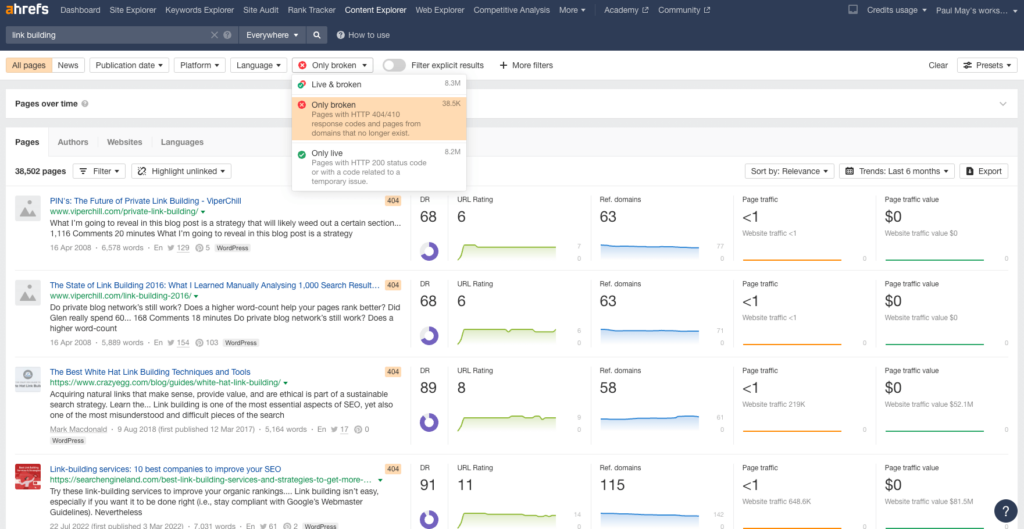
Use search terms like inurl: and intitle: and the words “resources” or “recommended links” to find resource pages where users list lots of links.
How to Pitch
Broken link outreach is very similar to resource page link building. You can find the template below:
Hey [First Name],
I read your article on [Research Page Title] and appreciated [Personalize]. I just thought you’d like to know that I found a broken link at [link anchor text].
I recently wrote about [topic] here [link] and wondered if you’d consider using my post to replace your broken link.
I’d really appreciate it, and I think it would help give some excellent context to your readers.
Let me know what you think!
—
6. Insert Links Into External Content (aka Link Insertion)
Link insertions are a type of link building where you ask a website to insert a link to your site on their page.
The link you ask to insert should be highly authoritative, helpful for a user, and worth inserting on the page. Otherwise, this tactic will not work. Several sites offer link building pricing for insertions at $141, but that’s much too low and very risky.
You are much better off finding them yourself.
Search the web for similar topics to your link to find link insertion targets. You’ll have the best luck looking for tangentially related topics, not exact match topics.
For example, if I wanted to insert my guide to link insertions somewhere on the web, I would try to find posts about link building tips rather than a post about link insertion.
(This is because posts written about a topic are most likely trying to rank for that topic, so they will be less willing to link out to a competing topic.)
How to Pitch
Pitching a link insertion requires selling the target on why your link benefits their page. Stressing the SEO importance can sometimes seal the deal.
Hi [First Name],
I loved your insights on [Topic] in your recent article! [Personalize]
I noticed you mentioned [Topic]. To add depth, I wanted to share our post on [Topic], which covers [briefly explain benefits].
Including a link to our post would provide an excellent resource for your readers wanting to learn more about [topic](and boost the contextual authority in Google’s eyes, which can help SEO).
You can see our link here: [Link to your content].
I’d happily suggest a line or two to make edits read naturally.
Please let me know what you think.
Note: There are no examples here since it’s hard to identify when a link has been inserted without knowing what is happening behind the scenes. (If it is obvious, the link insertion isn’t done correctly.)
7. Target Keywords With High Link Intent
Certain target keywords and phrases are searched and referenced more than others. Journalists, researchers, and publishers like to cite research within their articles.
So, by strategically writing posts that cover these keywords, you can be first in line when a researcher Googles the term. As the post ranks better, it naturally accrues links over time.
A link graph for a post targeting a keyword with link intent looks like the one below, where organic traffic and referring domains grow together over time.
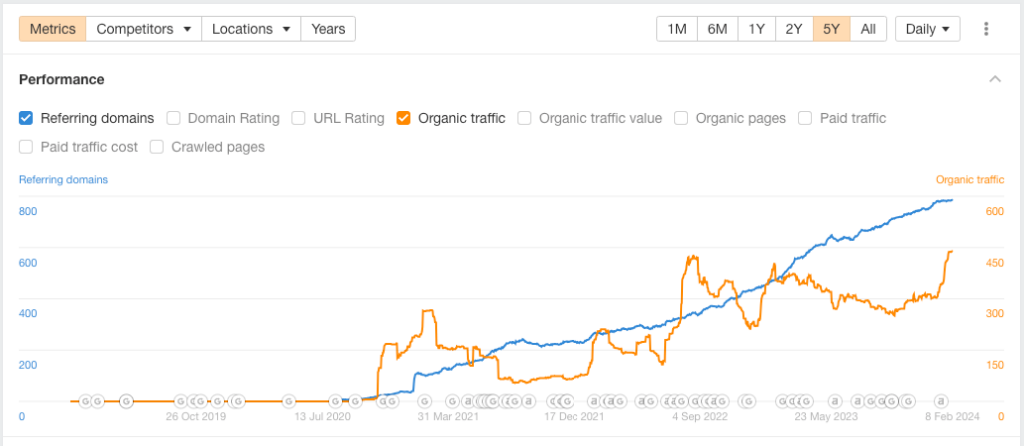
Statistics posts are the clearest example of keywords with high link intent. Definitions, types, and trends are similarly highly referenced in articles.
This strategy doesn’t work for everyone and can take longer, but it builds links naturally over time, which Google prefers. Be sure to choose a relevant topic to build relevant links.
Note that the organic traffic you get from these keywords may be heavily impacted by the launch of Google’s Search Generative Experience (SGE). You may see lower organic traffic if AI easily answers the term for users. But, journalists and bloggers will still need to link to these keywords as they cannot cite SGE as a source.
How to Pitch
Pitch your content in the same way that you would a data study or infographic. The idea is to highlight what makes your content great and why it fits their site.
Hi [First Name],
I saw you shared [Research Page Title] (personalize).
Since you shared, you and your readers might also be interested in a post we created on [topic].
The post covers [topic] and with [specific example].
You can see the full post here: [link].
We’d be thrilled if you shared it with your readers if you’re interested. I’m happy to help write a custom post, embed code, or any high-res graphics if you need them.
Please let me know.
Successful Examples:
HelpScout
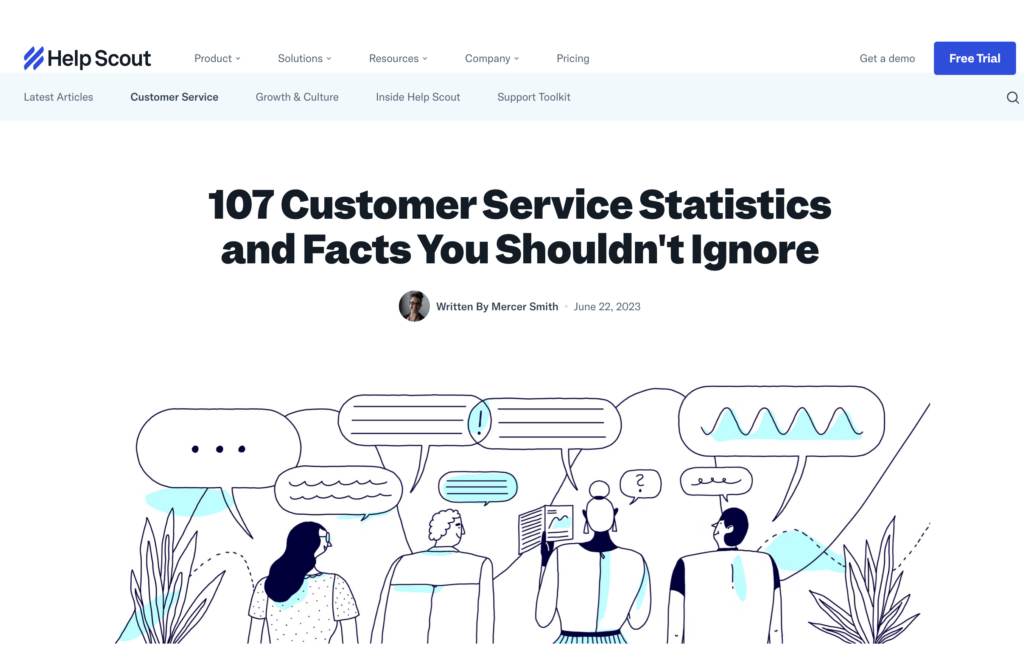
HelpScout’s customer service statistics post is a comprehensive post that ranks for the key term and has accrued 3,800 LRD over time. This is clearly an effective link building tactic for SaaS businesses.
Salesforce
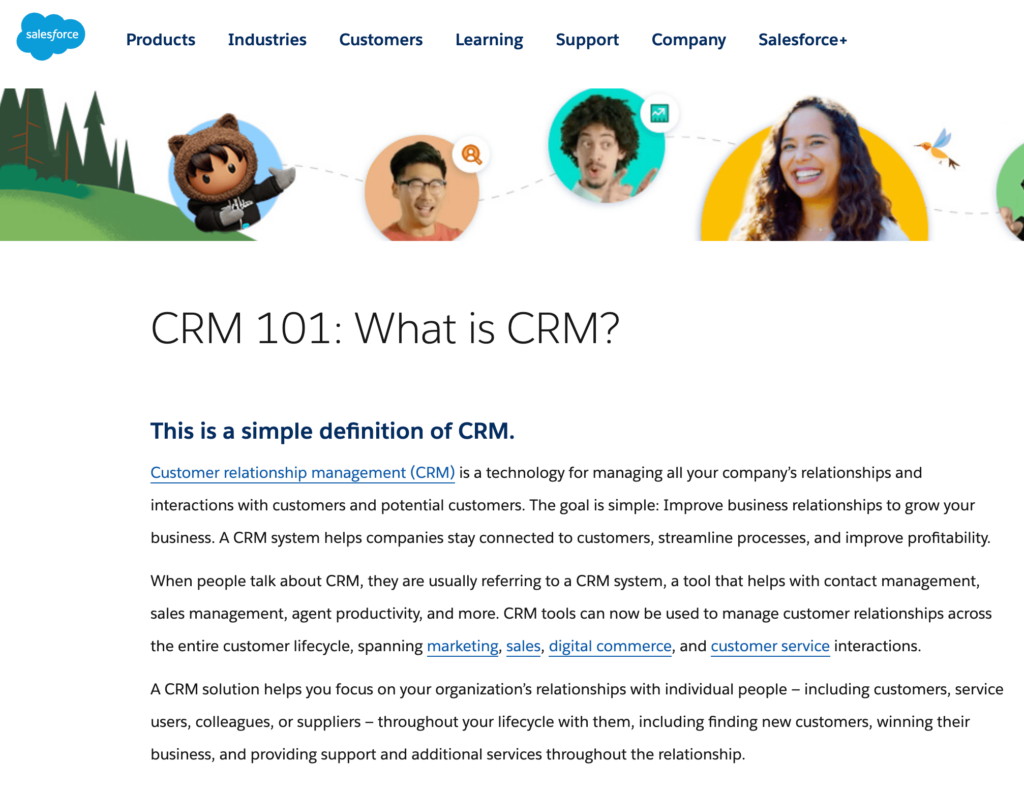
Salesforce’s What is CRM post has gained 1,900 LRD over time and ranks in the top position for the keyword.
8. Update Existing Backlinks (aka Link Moves)
Link moves should be called link updates because you ask a site linking to you to update the link and direct it to another page.
You’d want to do this mainly if the existing link to your site is irrelevant or inaccurate. For example, if someone linked to our link building tools post but was talking about contacting our Support Team (in which case I’d want them to link to our Help page.)
How to Pitch
When asking to move a link, always give them specific directions as to where the link is on their site now — both the page and the location of the URL.
Hi [First Name],
I noticed a link on your site [target’s link] points to an outdated page. Is there any chance you could update it to our new resource here [new link]? It’s more relevant and up-to-date.
The outdated link I am referring to is [outdated link] found in located [location] using the anchor text: [anchor text].
Please let me know.
Thanks for your help!
Note: There are no examples here because it’s harder to tell exactly when a link was changed on someone’s site without doing some deep digging.
Content-Less White Hat Link Building Tactics
Below are the tactics you don’t need a specific post or asset to build links to. (And, since content isn’t used to pitch, no live examples exist.)
9. Find Unlinked Mentions
As the name implies, unlinked mentions are instances of your brand or website not being linked to your site. Link reclamation is reclaiming links that used to be linked to your site.
To find unlinked mentions, you can use a service like Google Alerts or Talkwalker, which will tell you when your brand has been mentioned. Then, you can visit the site and see if there has been a link.
How to Pitch
Always start your unlinked mentions by thanking users for mentioning your brand.
Hi [First Name],
Thanks for mentioning [Your Brand/Site] in your [Research Page Title] post.
To provide further depth for your readers, would you be able to add a link to [your post]?
We think it would help give extra context for your readers (with the added benefit of sending your site some nice authority signals for Google).
Please let us know what you think!
10. Reclaim Lost Links (Link Reclamation)
Link reclamation is when you reclaim a link to your website that has either been removed or, in some cases, newly tagged as noindex.
You can find lost links using a tool like Ahrefs. Simply go to the Calendar tool and toggle “Lost” links. You can also check the backlinks tool and toggle to “Lost”.
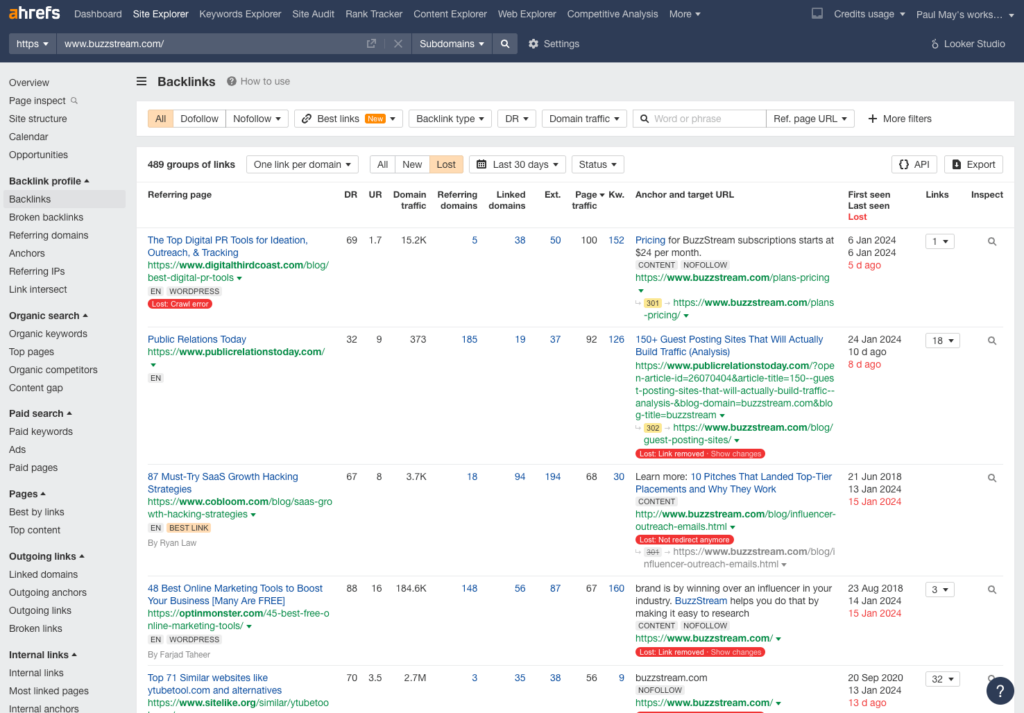
How to Pitch
Pitching link reclamation is relatively simple. Most brands will be fairly receptive unless there is a technical blocker (the site no longer allows links) or a business-related blocker (you are now a competitor).
Hi [First Name],
I noticed [Website Name] mentioned our [brand/product] in your recent post (thanks again!), but the link seems missing. Would you be able to add the link to [your page link] for reference?
It would help your readers find us easily.
Please let me know what you think.
11. Highlight Brand News
You can leverage big news about your brand for news coverage and white hat backlinks. This works best for start-ups or large companies with major news.
However, be selective about what you choose to lean into for your brand news outreach. Not everything is newsworthy.
Once you have your brand news, you can pitch it to journalists within the industry using a press release.
Search top news sites in your industry to find ideas for newsworthy brand stories. For example, TechCrunch covers everything in the startup tech world. A quick peek at their most recent stories shows us the kinds of news stories they cover.
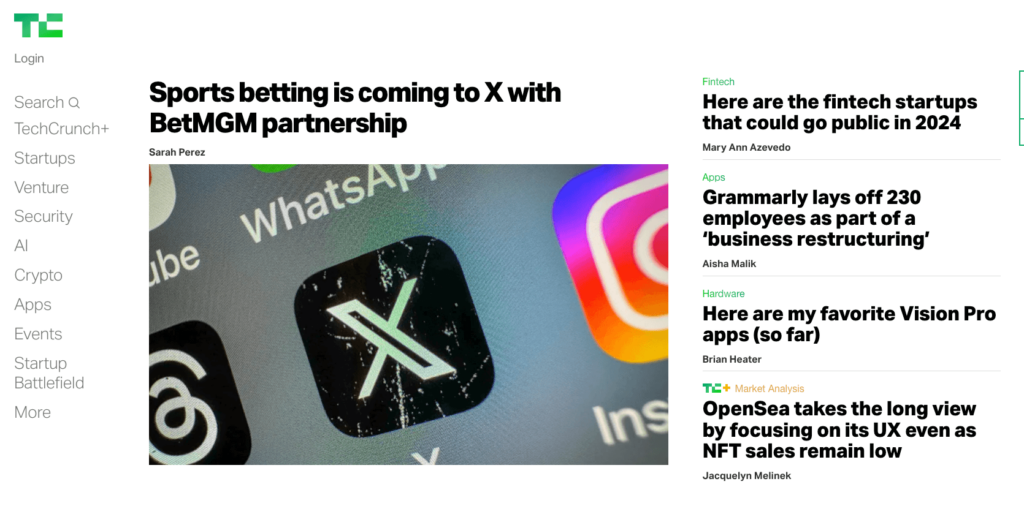
Maybe I’d consider pitching them a press release about a new brand partnership of mine.
How to Pitch
Brand news comes best via a Press Release. The template below comes from our anatomy of a press release post:
[Headline: Attention-Grabbing title reflecting the company news]
[Date]
[Company Name], a [brief description of the company and its industry], is excited to announce [describe the news, such as a new partnership, milestone, executive hire, etc.]. The [announcement/news] is a testament to [Company Name]’s growth and commitment to [mention the goal or mission related to the news].
Key Highlights:
- Highlight 1: [Detail about the news and its significance]
- Highlight 2: [Another critical aspect of the announcement]
- Highlight 3: [Additional relevant information]
“[Quote from a key executive detailing the news and its impact on the company’s future],” stated [Name, Title] of [Company Name].
For further details, visit [website/landing page].
About [Company Name]: [A brief company overview, including its mission, market position, and achievements].
[Contact Information]
–
Once you’ve built the press release, you can pitch using an email found in our email templates.
Hi [First Name],
I read your recent [Research Page Title] on [Website Name]. Since you regularly cover [Topic], I thought today’s announcement about [Topic] by [Company] might be of interest to you and your audience.
[Company], [PR Lead In], today announced [1 sentence high-level description of announcement]. (Add 1-2 sentences explaining why this is significant.)
What does this mean for the [Industry] industry?
- Key takeaway 1
- Key takeaway 2
- (Key takeaway 3)
The full press release can be found here. [Link to report or press release]
[Name], [Title] at [Company], [short bio to validate their expertise on the subject]. [He/She] is available to answer any questions about this. If you would be interested in speaking with [him/her], I would be happy to schedule a call. If time does not permit a call, I am also happy to provide answers to any questions you may have or provide a quote for you.
I look forward to hearing from you soon.
12. Pitch Reactive PR Content
When news breaks, your site can become the go-to source for comment (or even a full piece of content.) This is sometimes called “newsjacking”.
This link building approach leans heavily on having a pulse on the news and agility to turn around quickly, which not many brands can do on their own without a supportive agency.
However, reactive PR is incredibly useful for landing high-quality news links. The potential downside, however, is that some news outlets use nofollow links, which don’t directly drive SEO value.
Quote Pitching
Once the news drops, you reach out to relevant journalists with a quote from a thought leader at your organization, like the CEO.
Reactive Content
Creating new content based on a news story by:
- Create a press release containing quotes and/or an analysis and pitch that.
- Create an actual piece of content on your website and pitch that.
- Or both.
How to Pitch
To pitch a quote, use a template like this:
Hi [First Name],
As you may have seen, the latest [Subject] report by [Company] was just released revealing [1-2 Takeaways].
As this [report/news] outlines, this will affect [industry] by [point from report or news.] What some may not realize however is [offer a high-level tease of your SME’s unique perspective.]
[Name], [Title] at [Company], [short bio to validate their expertise on the subject] is available to elaborate further on this perspective. If you would be interested in speaking with [him/her], I would be happy to set up a call.
If time does not permit a call, I am also happy to answer specific questions you may have on the subject, or provide a quote for you.
I look forward to hearing from you soon.
To pitch a new piece of content related to the news, you can slightly tweak the above:
Hi [First Name],
As you may have seen, the latest [Subject] report by [Company] was just released, revealing [1-2 Takeaways].
As this [report/news] outlines, this will affect [industry] by [point from report or news.] We’ve created [explain your content and why it’s relevant]. [Link to content].
[Name], [Title] at [Company], [short bio to validate their expertise on the subject] is available to elaborate further on this perspective. I would happily schedule a call if you would like to speak with [him/her].
If time does not permit a call, I am also happy to answer specific questions you may have on the subject or provide a quote for you.
I look forward to hearing from you soon.
13. Use a Quote Request Platform (e.g. HARO)
Some journalists and writers request quotes from experts to help elevate their stories. These backlinks are typically high authority and highly relevant.
There are a few main platforms to use to find quote requests:
The downside of most of these platforms is that many users spam these requests with responses. So, when responding to journalists, respond promptly and succinctly, and most importantly, make sure your pitch matches exactly what they ask for. I wrote about why I prefer Qwoted in our digital PR tools post.
How to Pitch
We have an entire guide on pitching HARO, but the main tips are to keep it short, stand out, and ensure you are highly relevant.
14. Get Featured on Podcasts
According to Edison Dial, 42% of Americans ages 12 and older have listened to a podcast in the past month, and the number has continued to grow each year since 2006.
Clearly in demand, Spotify alone has over 5 million podcast titles. That’s a lot of link opportunities.
Pitching yourself as a podcast guest can get you links on blog posts and websites, potentially leading to subsequent podcast appearances.
How to Pitch
Listen to their podcast first and warm up the relationship by reaching out on social media if possible. Then use a template like the one below:
Hi [First Name],
I’m [Your Name], a [Your Profession/Title]. I’m a listener of [Podcast Name] and really enjoyed [Specific Episode]. [Tell them why you liked it.]
With my background in [Your Field/Industry], I’d love to see if you’d consider having me on as a guest.
One topic that came to mind is [Pitch podcast topic to discuss]. [Explain why it’s a fit for their listeners.]
I’d love to discuss this further if it sounds like a good fit for [Podcast Name].
Thanks for considering.
Please let me know!
15. Find Quality, Relevant Guest Post Opportunities
Many sites offer guest posting opportunities, but you should only consider high-quality guest posting sites.
This is last on our list because Google looks at paid guest posts as advertising, meaning they should have “Nofollow” and “sponsored” links, which do not pass link value.
But, naturally appearing on other people’s sites as a guest post is not against any guidelines and, therefore, remains a viable white hat link building tactic. The impact on ranking is still up for debate.
You need to be careful about how you pitch your guest posts. Don’t pitch to sites that clearly list authors as “guest” or “admin” instead of using a name. Don’t pitch to sites that accept every guest poster. If anyone can do it with little to no guidelines, the link most likely isn’t valuable.
How to Pitch
I outline the whole process in this guest blogging post, but here’s how to pitch.
Most of the time, guest post sites will have specific guidelines for pitching, including what subject line to use.
Others may have a form that you need to fill out on their website, in which case you can modify the email template below to fit.
Hi [First Name],
I just read [Research Page Title] and particularly enjoyed (personalize).
I’m [Your Name], and I would like to propose a guest post titled [title]. This piece would [quick recap]. This idea would be valuable for your readers because [reason].
You can see an example of my recent work on a similar post in [Publication].
I’d love to hear your thoughts about the post idea. I’m happy to pitch more ideas if these don’t work for you.
Let me know!
Frequently Asked Questions About White Hat Link Building
Here are some common questions about white hat link building from customers’ calls and our chat.
What Are Your Top 3 White Hat Link Building Methods?
First is content-led link building, where you create and promote high-quality, informative content that naturally attracts links from reputable sites. These can be guides, data studies, infographics, or interactive posts. Then, guest blogging, where you write valuable articles for other websites. Last is broken link building, where you identify broken links on external websites and then offer your content as a replacement to earn a backlink.
Is Link Building Illegal?
No, link building is not illegal. However, there are manipulative, spammy tactics that can violate search engine guidelines and will result in penalties. Stick to white hat link building and you’ll be fine.
How Do Beginners Get Backlinks?
Start by creating compelling content that provides value to your target audience and make it link-worthy. Then, reach out to bloggers and journalists to get links to your content.
What is the Difference Between Link Building and Backlinks?
Link building is the process of building backlinks. Backlinks can come actively through promotion or passively, where users link to your content because they come across it in research.
What is a Good Link Building Strategy?
A good link building strategy builds high-quality, relevant links naturally over time. A good strategy is also diverse enough that no one tactic makes up more than 30-40% of your strategy. This way, if, for whatever reason, Google comes after that type of strategy, you still have a nice cushion of backlinks.

 End-to-end outreach workflow
End-to-end outreach workflow


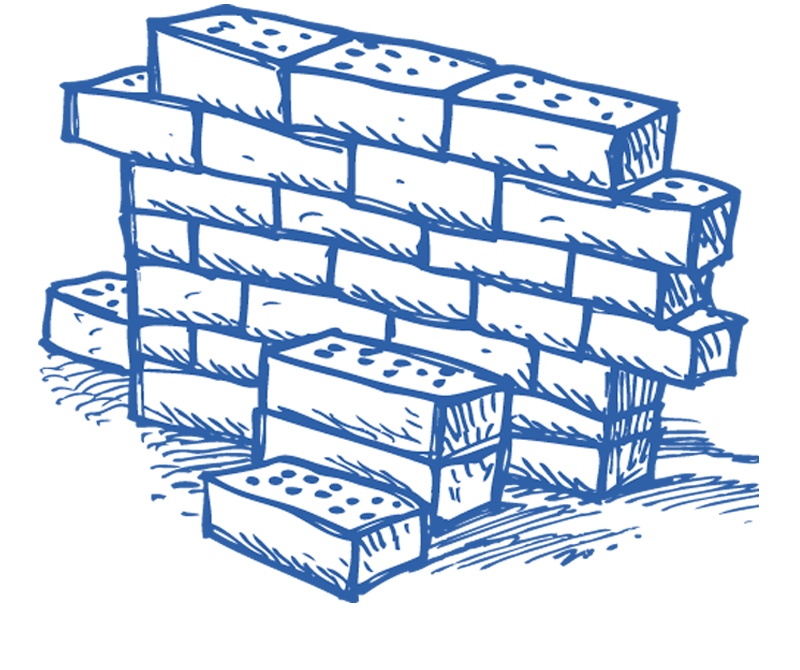
 Check out the BuzzStream Podcast
Check out the BuzzStream Podcast







